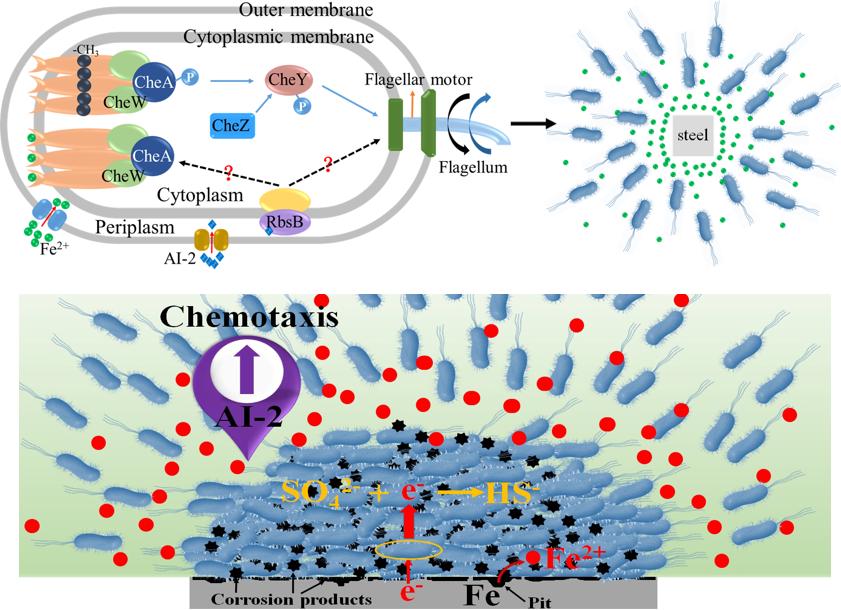
Sulfate reducing bacteria (SRB) are vital corrosive microorganisms. Biofilm is the core in corrosion caused by SRB, and its development is regulated by bacteria.
Autoinducer-2 (AI-2) inhibited biofilm formation in cultures with sufficient organic electron donors. However, in the marine environment with deficient organic electron donors, the mechanism of biofilm formation of SRB on carbon steels, and the effects of AI-2 on the biofilm and subsequent corrosion are unknown.
Recently, a research team led by Prof. ZHANG Dun from the Institute of Oceanology of the Chinese Academy of Sciences (IOCAS) investigated the influence of AI-2 on the carbon steel corrosion by one strain of genus Desulfovibrio in the culture with extremely deficient organic electron donor.
The study was published in Corrosion Science on Mar. 2.
AI-2 is produced as 4,5-dihydroxy-2,3-pentanedione (DPD), which is then secreted into the solution and cyclizes spontaneously into different isomers including AI-2.
The researchers added DPD with a concentration of 15 μM in the SRB culture with the removal of sodium lactate and yeast extract, and found that weight loss of carbon steel increased from (4.1 ± 0.1) to (5.3 ± 0.5) mg/cm2 after 14 days of exposure.
Meanwhile, the count of sessile cells in the culture with AI-2 was about 1.6-fold higher than that in the culture without AI-2, and AI-2 promoted the accumulation of cells on the steel. With no available carbon source, bacteria at the bottom of biofilms would use Fe0 as the electron donor to obtain energy to survive. Due to the increase of bacteria requiring electrons from Fe0, the corrosion of carbon steel was aggravated by AI-2 addition.
How do the bacteria form biofilms on the steel with carbon starvation? The researchers found that there was a spatial gradient of Fe2+ concentration before and after the steel was corroded by bacteria, and Fe2+ increased the directional motility of bacteria. The bacterial chemotaxis to Fe2+ might regulate the biofilm formation in cultures with steel, and AI-2 might promote biofilm formation by their enhancement in bacterial chemotaxis to Fe2+.
Finally, the researchers analyzed the chemotactic signal transduction proteins and possible AI-2 receptor in this strain by the protein Basic Local Alignment Search Tool (BLAST) comparison.
"This work proves that chemotaxis with AI-2 as the signaling molecule can explain the phenomena that Fe2+ seems to attract SRB cells to carbon steel coupons more than other surfaces such as glass and wood," said Dr. WU Jiajia, corresponding author of the study.
"This study sheds light on the initial attachment of SRB on carbon steels, which has been neglected in previous works but vital for the comprehension of SRB corrosion mechanism. And further studies are highly desirable in this topic," said Prof. ZHANG Dun.

Proposed mechanism of chemotaxis to Fe2+ of Desulfovibrio sp. and its induced carbon steel corrosion affected by AI-2 (Image by IOCAS)

86-10-68597521 (day)
86-10-68597289 (night)

52 Sanlihe Rd., Xicheng District,
Beijing, China (100864)

